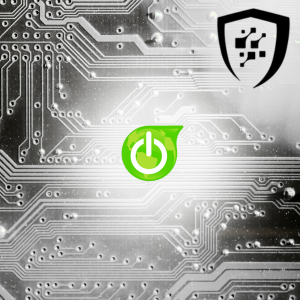 The rise of smart devices — from thermostats to baby monitors — has made our lives more connected and convenient. But it has also introduced new cybersecurity risks. In fact, there were more than 112 million IoT-related cyberattacks worldwide in 2022, a number that rose by 82% in 2024 as compared to 2023, fueled in part by the surge in AI-driven threats.
The rise of smart devices — from thermostats to baby monitors — has made our lives more connected and convenient. But it has also introduced new cybersecurity risks. In fact, there were more than 112 million IoT-related cyberattacks worldwide in 2022, a number that rose by 82% in 2024 as compared to 2023, fueled in part by the surge in AI-driven threats.
Recognizing the urgent need for better protection, the U.S. government introduced a new safeguard: the Cyber Trust Mark. This new labeling program is designed to help consumers easily identify smart devices that meet strict security standards.
Here’s what you need to know about the Cyber Trust Mark and how it can help you make safer choices when buying new technology.
What Is the Cyber Trust Mark
Smart devices are everywhere nowadays, from our homes to offices. Yet, some such devices are still insecure, creating vulnerabilities for hackers to steal our information and spy on us. In 2023, TVs, smart plugs, and digital video recorders had the most IoT vulnerabilities and attacks. Many more types of devices may be dangerous without our knowledge.
With the Cyber Trust Mark, even non-technical shoppers can feel confident knowing which devices are safer options.
How Does a Device Earn the Cyber Trust Mark
For a device to receive the Cyber Trust Mark, it must meet several key cybersecurity standards, including:
- Strong password protections: Devices must require strong, unique passwords — a critical defense against common hacking methods.
- Data protection: Products must safeguard personal and sensitive data through encryption and secure data handling.
- Regular software updates: Manufacturers must commit to issuing timely security patches to address newly discovered vulnerabilities.
Each device undergoes comprehensive testing to verify it meets these criteria. Only after passing can a manufacturer display the Cyber Trust Mark on the device’s packaging.
Standards that Define the Cyber Trust Mark
Cyber threats constantly evolve, and so will the Cyber Trust Mark standards. The U.S. government plans to periodically update the requirements to reflect emerging risks and technology trends.
Devices may also require retesting over time to ensure they continue to meet the latest security benchmarks, helping to maintain trust in the mark’s value.
How Do Companies Get Their Devices Certified?
Manufacturers must apply for the Cyber Trust Mark and submit their devices for evaluation. While testing and certification involve time and investment, companies benefit from the enhanced consumer trust and competitive advantage the mark provides.
As security becomes a growing priority for buyers, earning the Cyber Trust Mark could be a strong selling point.
When Will We Start Seeing the Cyber Trust Mark?
The program is still new, but the Cyber Trust Mark is expected to start appearing on smart devices soon. You’ll likely see it in stores and online product listings over the coming months on devices such as:
- Smart TVs
- Smart speakers
- Security cameras
- Smart thermostats
- Smart locks
How Does the Cyber Trust Mark Help Consumers?
For consumers, the Cyber Trust Mark takes the guesswork out of shopping for safe devices. Instead of needing technical knowledge or deep research, you can simply look for the shield logo and know the product meets trusted security standards.
It also drives manufacturers to prioritize cybersecurity in their designs, creating a safer marketplace for everyone.
What If a Device Doesn’t Have the Mark?
If a device doesn’t have the Cyber Trust Mark, it doesn’t automatically mean it’s unsafe. However, you should take extra steps to assess its security. Look for:
- Information about the manufacturer’s security practices
- Details on password protection, data handling, and software update policies
- Reviews or reports about known vulnerabilities
When possible, opting for devices with the Cyber Trust Mark ensures an added layer of verified protection.
What About Devices You Already Own?
If you already have smart devices at home, you can still strengthen their security even without the Cyber Trust Mark:
- Change default passwords to strong, unique ones
- Regularly update device software and firmware
- Disable features you don’t use* to reduce potential attack points
- Secure your Wi-Fi network with a strong password
These simple steps can significantly reduce the risk of your existing devices being compromised.
The Future of Smart Device Safety
The Cyber Trust Mark is a major step toward improving smart device security, but it’s just the beginning. In the future, we can expect:
- Even stricter security standards
- Expansion of the program to cover more device categories
- Ongoing improvements to security testing processes
While the Cyber Trust Mark is currently a U.S. initiative, it may inspire similar programs internationally as the global need for smart device security grows.
